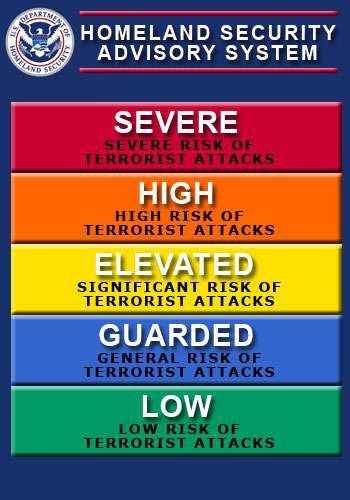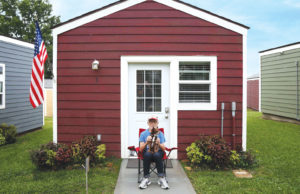
New alerts will advise the public that there is an
“elevated threat” or a more serious and specific “imminent threat.” The
warnings will include a concise statement about the danger and steps
that can be taken to mitigate the risk to the public.
The primary-color alerts have “faded in utility except for late-night comics,” said Secretary of Homeland Security
A government review determined that the five-tiered
color-coded system instituted in 2002 had suffered from a lack of
credibility and eroded public confidence. The color has not been
changed since 2006 and has never gone below yellow, or “elevated,”
risk. Setting the risk level to green, or “low,” was never even
considered.
Under the new system, local police, business and the
public will be asked to look for tactics or behaviors that could be
part of a terrorist plot the government is tracking. Alerts could be
directed at airports, subways or hotels, for example, depending on the
intelligence.
Also, the government will inform the public about
what steps can be taken by businesses and individuals to respond to the
threat. For example, the public in one part of the country may be asked
to shelter in their homes or report information about a car that is
part of a suspected terrorist plot, Napolitano said.
The alerts will be issued for a maximum of two
weeks, unless the intelligence community determines that the threat is
serious and specific enough to reissue the information. Forcing the
government to constantly review the warnings, Napolitano said, is
designed to “get us away from cascading alerts that never seem to
disappear.”
Facebook and Twitter will be used, along with
traditional media, to disseminate the alerts. The new plan is called
the National Terrorism Advisory System and will be fully implemented on
———
(c) 2011, Tribune Co.
Distributed by McClatchy-Tribune Information Services.














